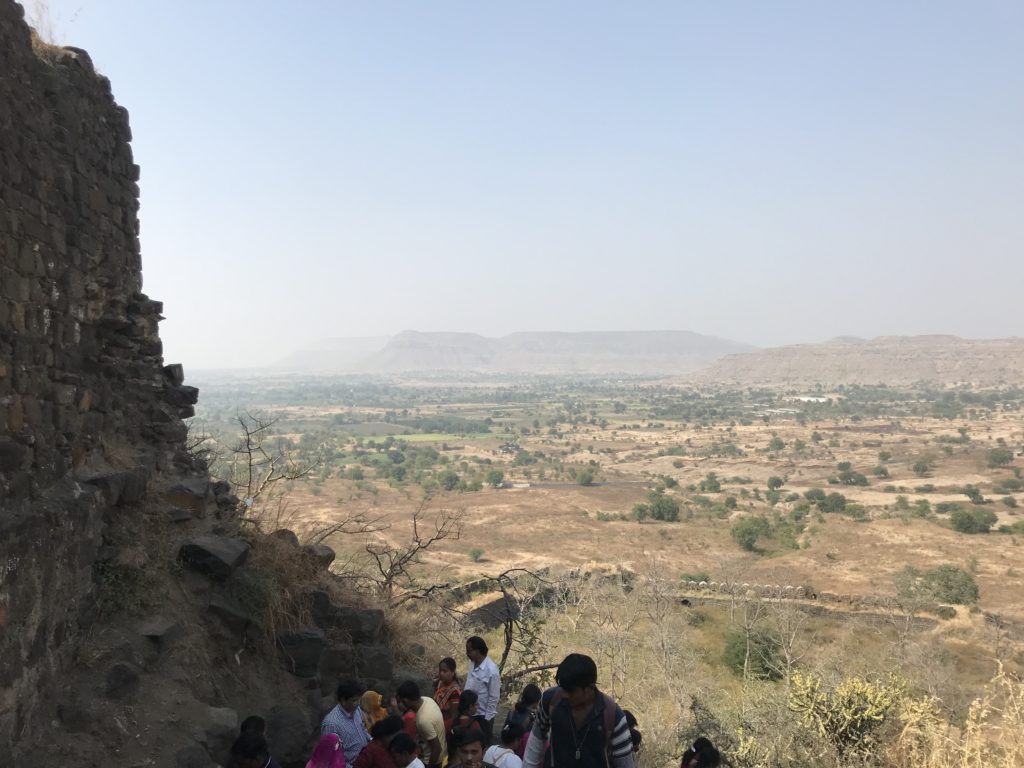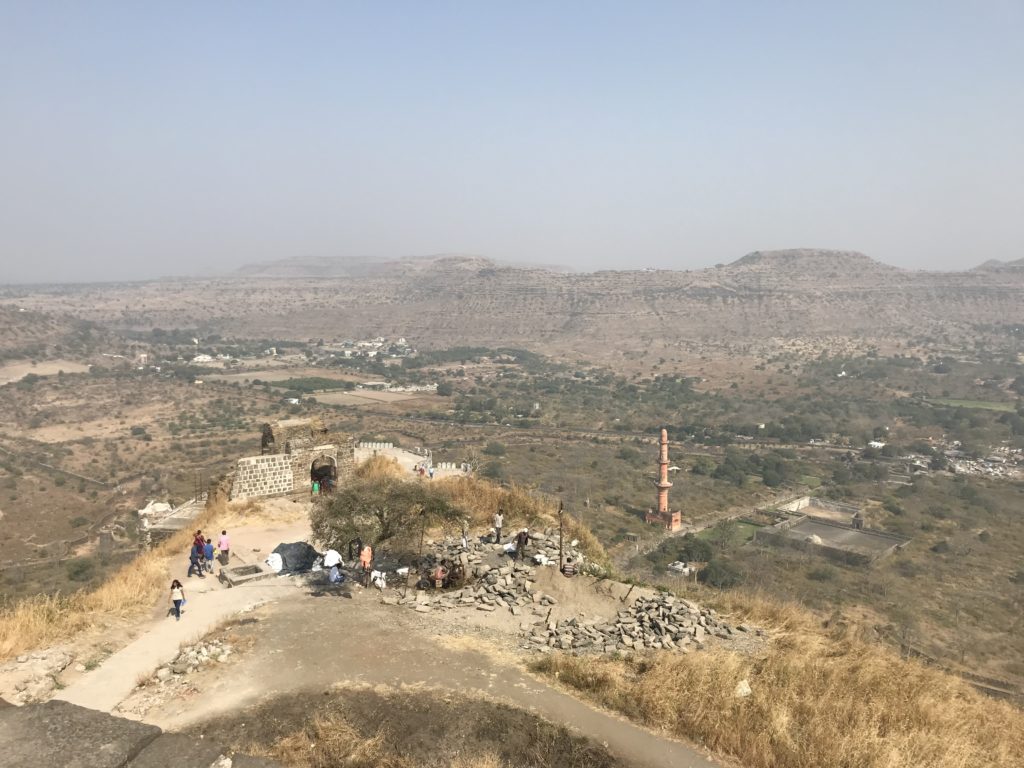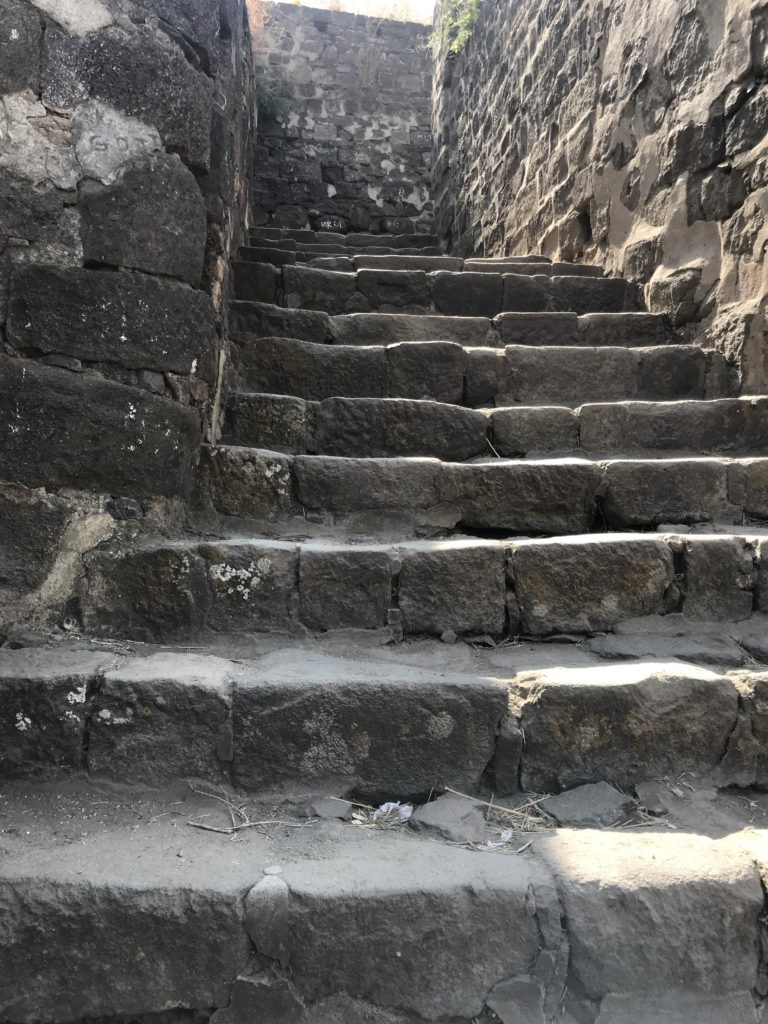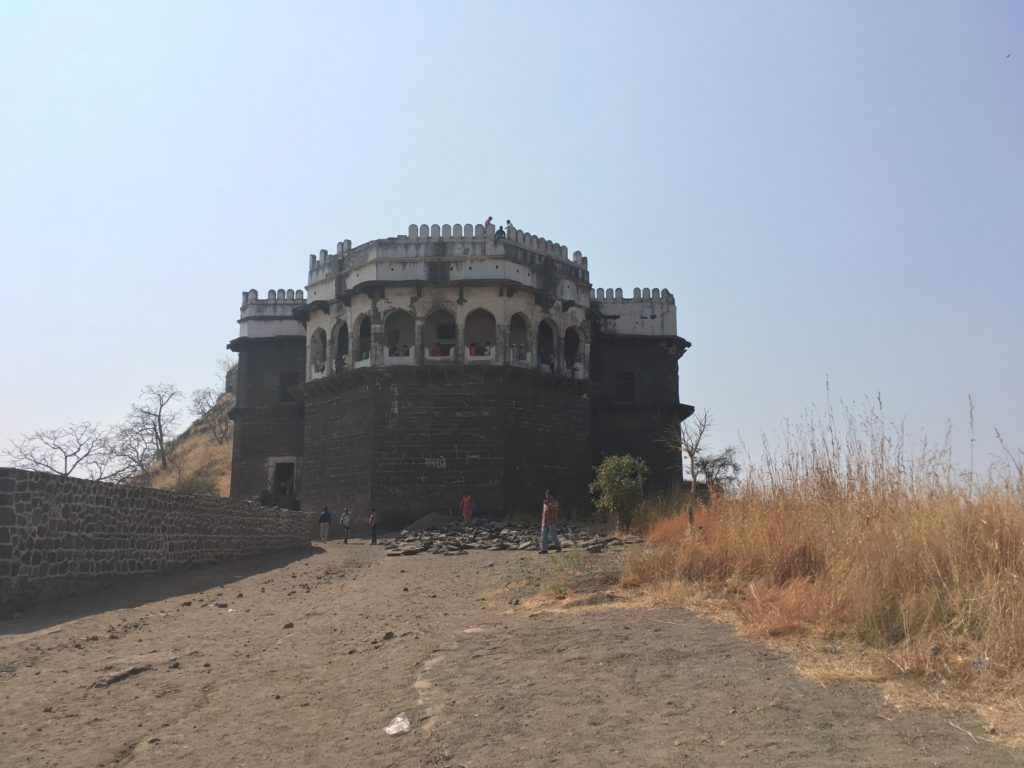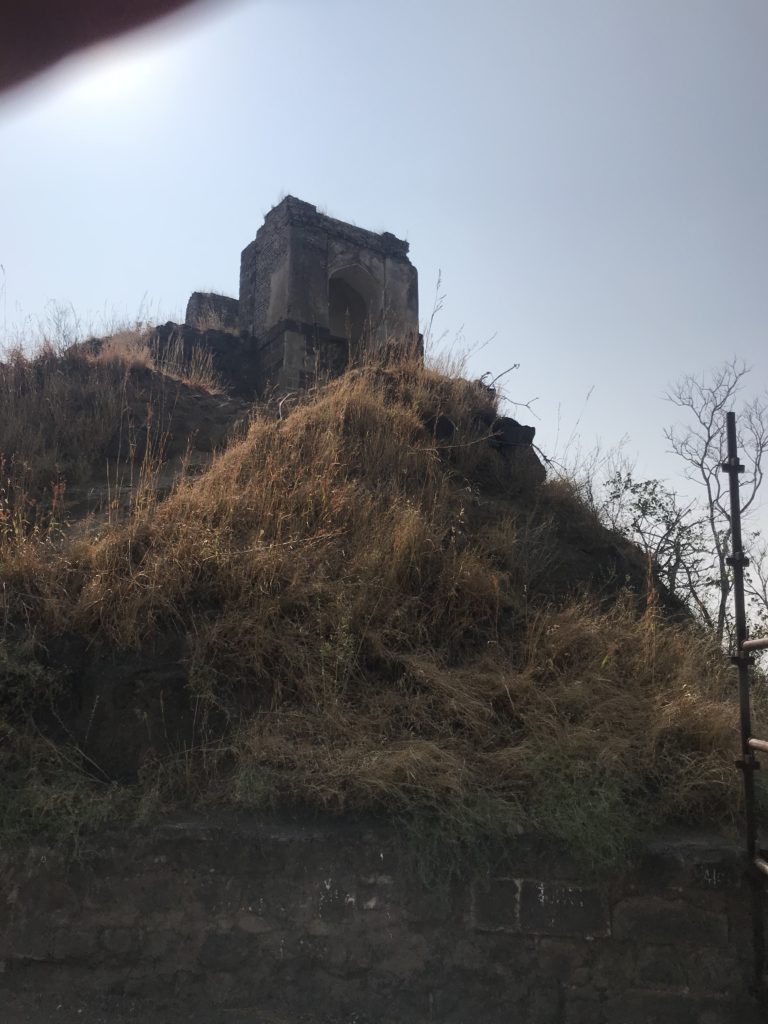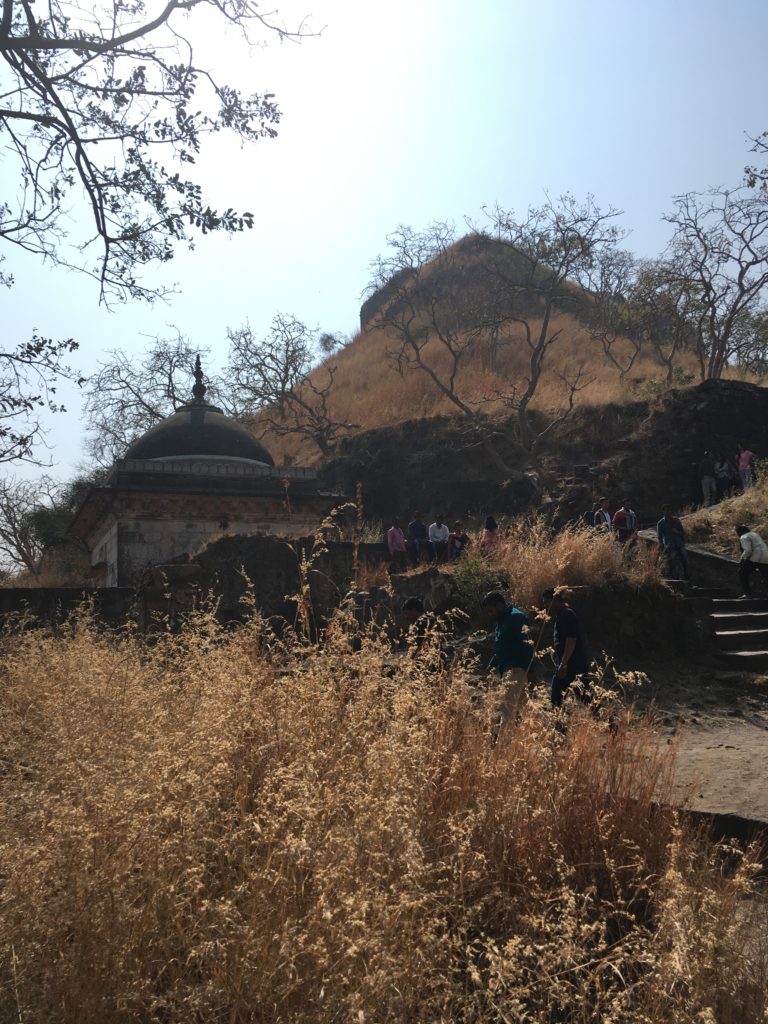
Conquering the Daulatabad Fort
Conquering the Daulatabad Fort
The psychology at play behind one of India’s most impregnable forts
Listen to This
Watch This
Climbing atop the Daulatabad Fort had been on my bucket list for quiet a while. I am happy to say that I’ve now ticked that one off.
Ever since visiting the fort a few years ago, I always wanted to scale it to the top. At that time we were pressed for time and most people didn’t recommend going all the way up. See the Ellora Caves instead and that’s what we did.
Being the history buff that I am, I’ve always wanted to come back and now I did. I went up to the top climbing about 500 uneven stairs, even through the dark. Whatever the people might say, never miss climbing this fort, it is nothing like you’ve ever seen.
It is good to see that the fort had adapted to technology or at least for the tickets they have adapted. We got tickets that could be scanned in their system.
Along with a guide to tell us the story of this fort, we set off to conquer the Daulatabad Fort. Would we last all the way till the top?
A Brief History
The King Bhillama V of the Yadav Empire built the fort in the 11th century. The Yadavs named this fort Deogiri, the Hill of the Gods.
At this time, the Jains were building the Ellora caves. Seeking their help, King Bhillama V built this fort. As a reward, he let the Jains carve out the statues of their Thirthankars.
In 1296, after a 6 month long siege, Allaudin Khalji got the Yadav’s to surrender. His siege had cut off the food supply in the fort. His soul aim was to raid the fort for treasure. He made the Yadav’s pay a hefty fine.
Allaudin Khalji’s successor Muhammad-bin-Tughluq took special interest in the fort. It is safe to say that he orchestrated many changes here including giving the Deogiri fort a new name- Daulatabad. Daulatabad means the Place of Wealth.
Muhammad-bin-Tughluq, our guide explained was an intelligent man. During his reign he decided to shift the capital of the Delhi Sultanate to Daulatabad Fort. It was the central part of his empire. A place where he could access all his subjects especially the southern part.
His only mistake was he made it mandatory for all his people at court and in his former capital of Delhi to move along with him. Sick, young and old all made a strenuous journey to Khidki (the former name of Aurangabad). This might tell us that Muhammad-bin-Tughluq was weak in economics. He never thought of the strain the excess population might have. No only did many perish on the long journey due to the lack of food and water, they didn’t have any livelihoods in the new capital.
The locals as well as the migrants all suffered. Being a headstrong Sultan, Muhammad-bin-Tughluq stayed true to his word.
The royal treasury also had to bare the brunt.
After a difficult 8 years, Muhammad-bin-Tughluq finally went back to Delhi with his people. Although much at changed at Khidki and Daulatabad.
The Fort Is A Mind Game
After a brief history explanation, we began our tour.
I had previously heard that the only way up the Daulatabad fort was through a dark maze. The guides were the only ones to know the exact way through, the others would never return out.
However this dark maze had to wait, first we had to pass the many walls that surround the fort.
Muhammad-bin-Tughluq had seven walls that ran around the fort. These walls have about 56 doors which are all a hoax. Some lead you to a dead end or some directly into the valley below.
When the enemy would breach the first door, he’d have to choose his next step. The right or the left door?
Remember the enemy had little time on their hands before the guards realised that they were under attack. Selecting the wrong door meant that they would be attacked from the fort itself.
This entire invincible fortress is built out of engineering perfection and psychological dilemmas.
When the enemy has the option to select the right or the left gate, Muhammad-bin-Tughluq was smart enough. He made the left gate bigger and the right one smaller. Which one would you choose? The fort is inclined on the left side, not the right.
Did you choose the left massive gate? Well you lead yourself to a dead end. The guards have already discovered you.
The right smaller gate is the correct path up.
The fourth gate is crafted with more accuracy. These wooden gates couldn’t be burnt. Why? The huge flame would give the enemy away. So they’d made elephants run up to the gates and break them open. The gates at the Daulatabad Fort are crisscross. There is no place for a elephant to get a head start.
If the enemy made it past these numerous problems, the next problem was the 4th or 3rd gate.
These gates were fitted with spikes. If the elephant was to run up and hit the gates, he’d be horribly in pain. The enemies used camels to solve this problem. They’d make the camel act as the buffer. Poor camels would hit the sharp spikes and be crushed by the impact of the elephant.
Exploring the Variety of the Fort
From here, the next stop is the Chini Mahal. In its hayday, the Mahal would be coated in Chinese porcelains. Auragazeb had this beautiful Mahal converted to a prison. Chhatrapati Shivaji Maharaj’s son and heir Sambhaji Maharaj was kept prisoner here.
The reason for converting the Chini Mahal was that it was right at the centre. Down were the military barracks and up was the main fort. A prisoner escaping would easily be caught.
This place offered us wonderful views of the Chand Minar. The only structure here to be built in sandstone.
Further from here was a beautiful and deadly seen. A wet moat stood between us and the fort up ahead. For much of the history of the Daulatabad fort, a rope bridge would take you across. However a staircase was later constructed.
This staircase took the enemy on a right angled turn to the left. This made the enemy show its back to the guards behind also while rendering their right hand useless by facing the inner wall.
And then be engulfed by darkness. The dark maze begins.
We could hear the bats up on the ceiling. A flashlight to guide the way, we had to be careful about the next step.
Due to nature’s hand, the rock between the maze split open revealing sunlight and air. A simpler staircase was built from here. However, the dark maze is still open to tourists who dare and we did dare.
What an experience! Scrambling in the dark, we were lucky to have a flashlight. I can only imagine the horrific time the enemy might have in there.
A single wrong turn would lead the enemy straight into the deep valley below.
Enough to say, we were happy to see the sunlight. All these encounters and the guide reminded us, we are just a quarter of way up!
The Last Leg of the Journey
The rest of the way is paved with uneven stairs.
We were in a dilemma, should we go any further?
Despite what most tourists to the fort say- Yes!
We climbed approximately 455 stairs.
It felt like a victory when we reached the White Plastered facade at the top. But we hadn’t reached the summit yet.
We went up from this white facade where we got to admire a canon.
As you go further up, the stairs become more uneven and steep with loose pebbles. Furthermore there aren’t any rails to hold on to.
And at long last, a flight of stairs took me up to the top of the fort. What a dangerous flight of stairs they were! They face the fort on one side and the valley on the other. That’s not even the scary bit, you’ll be surprised to know- these steps have no railing! One slip and off you go down into the valley.
After a yes and no battle with myself since I am not a fan of scrambling down such flight of stairs, I braved them out.
——————————
Exploring the Edinburgh Castle
——————————
I Made It!
I had heard about the 14 tonne canon on the top. Moreover for me it was all about climbing up the fort till its humanly possible.
The canon at the top was majestic. It has a firing range of 10 kms!
Our guide explained that these canons weren’t dragged up. And quiet true that is. We could hardly get ourselves up here let alone a 14 tonne canon! The canon was assembled up here.
Our ancestors had used physics to keep these canons in place. It is almost impossible to fire such a powerful canon from a small watch tower. The canon would jerk after firing the shot and tumble downhill. There is an equal and an opposite reaction….remember?
Using this knowledge, they locked the canon in place using strong iron hooks. Although this would transfer pressure to the watch tower instead. To nullify this effect, they built a spring underneath. Now this is true perfection combined with knowledge.
Apart from the technical details, the views from here are awe-inspiring. I could see the entire Daulatabad town from up there.
Standing at the very top, I simply had to imagine how beautiful this fort must have been in its prime. The grand Chini Mahal, the tall Chand Minar and the strong fortifications would have looked rather marvellous and intimidating.
It is saddening to see the sorry state of the fort today. Not only is it the ruins that are hurtful to see but also the sheer lack of respect that most Indians have for their history. The plastic bottles strewn everywhere as if it were a dumping area and the horrific sight of people sitting on the canons as if it were a sofa:( The sign board asking the people not to do so was laying in neglect.
The worse was when I pointed out to a fellow tourist that the canon was not to be sat upon, another eavesdropper, as people generally do, had to argue with me. He said, “Itna Uper Chadke, Hat Nahi Lagaya Toh Kyu Chadke Aneka?” (Why should we climb up if we can’t touch the canon?)
More shocking was the number of people who have carved out their names on the walls of the white facade. Luckily the stone used to build these forts isn’t that easy to carve upon.
However I was somewhat satisfied to see that the fort is under restoration. Hopefully with a little more care, it might be restored back to its former glory.
It is of course not solely the job of the Archeological Survey of India and other bodies to maintain India’s rich history but also of the tourists. It is not imperative to love history or its monuments but it is of utmost importance to value the place you come from, your very own roots. After all, contaminated water don’t help bear sweet fruits.
This was my experience Conquering the Daulatabad Fort. Have you been here before? What was your experience like visiting a fort in India? Comment below.
———————————–
The Chhatrapati Shivaji Maharaj Museum formerly Prince of Wales Museum has step up a special India and the World exhibit. 230 objects from all over the country and the British Museum, London are on display here. Explore them via our special Picture Gallery. Type in your email here to explore.
NOTE: The Bibliography for this post is missing. Please help us credit the sources that deserve it. If you believe your work, or a work you know of needs to be cited here, please write to editor@giglee.in to inform us. DISCLAIMER: The intention of this article is not to hurt anyone's sentiments. The thoughts expressed in the article are purely those stated by the author of the work. The information provided on this website may not be complete, reliable, accurate and/or updated. The details you share with the website will not be shared or sold. We are not liable if in case of theft, your data is stolen. The content on this website is provided without any warranties whether express or implied. If you have a doubt, query or complaint please write to editor@giglee.in and we shall respond as soon as possible.




